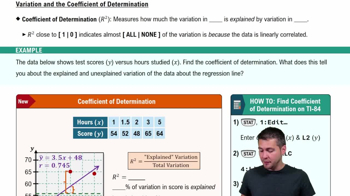Here are the essential concepts you must grasp in order to answer the question correctly.
Levels of Measurement
Levels of measurement refer to the different ways in which data can be categorized and quantified. There are four primary levels: nominal, ordinal, interval, and ratio. Each level has distinct characteristics that determine the type of statistical analysis that can be performed. Understanding these levels is crucial for accurately interpreting data and selecting appropriate statistical methods.
Recommended video:
Difference in Proportions: Hypothesis Tests Example 1
Ratio Level of Measurement
The ratio level of measurement is the highest level of measurement, characterized by the presence of a true zero point and the ability to perform meaningful mathematical operations. In this level, both differences and ratios between values are meaningful. For example, in the context of horsepower, a value of zero indicates the absence of power, allowing for comparisons such as '200 horsepower is twice as powerful as 100 horsepower.'
Recommended video:
Coefficient of Determination
Application to Horsepower Data
When analyzing the horsepower of racing car engines, it is essential to recognize that this data is measured on a ratio scale. Horsepower values can be compared, and calculations such as averages and ratios can be performed. This understanding allows for more sophisticated statistical analyses, such as regression or correlation, which can provide insights into performance and efficiency in racing contexts.
Recommended video:
Visualizing Qualitative vs. Quantitative Data
 Verified step by step guidance
Verified step by step guidance Verified video answer for a similar problem:
Verified video answer for a similar problem:



 2:13m
2:13m